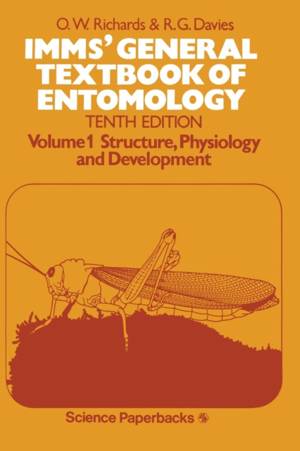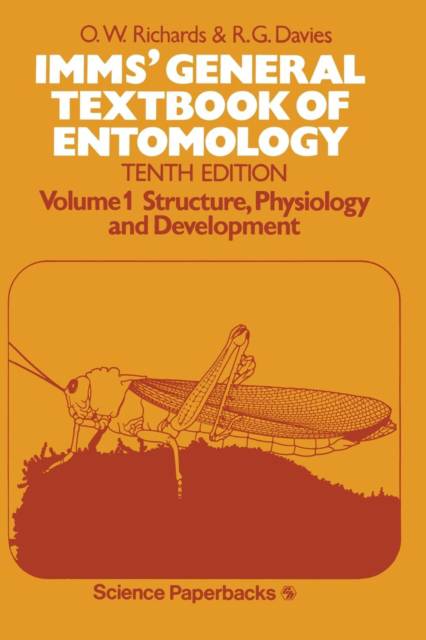
- Afhalen na 1 uur in een winkel met voorraad
- Gratis thuislevering in België vanaf € 30
- Ruim aanbod met 7 miljoen producten
- Afhalen na 1 uur in een winkel met voorraad
- Gratis thuislevering in België vanaf € 30
- Ruim aanbod met 7 miljoen producten
Zoeken
Imms' General Textbook of Entomology
Volume I: Structure, Physiology and Development
€ 274,95
+ 549 punten
Omschrijving
seem as appropriate now as the original balance was when Dr A. D. Imms' textbook was first published over fifty years ago. There are 35 new figures, all based on published illustrations, the sources of which are acknowledged in the captions. We are grateful to the authors concerned and also to Miss K. Priest of Messrs Chapman & Hall, who saved us from many errors and omissions, and to Mrs R. G. Davies for substantial help in preparing the bibliographies and checking references. London O.W.R. May 1976 R.G.D. Part I ANATOMY AND PHYSIOLOGY Chapter I INTRODUCTION Definition of the Insecta (Hexapoda) The insects are tracheate arthropods in which the body is divided into head, thorax and abdomen. A single pair of antennae (homologous with the anten- nules of the Crustacea) is present and the head also bears a pair of mandibles and two pairs of maxillae, the second pair fused medially to form the labium. The thorax carries three pairs of legs and usually one or two pairs of wings. The abdomen is devoid of ambulatory appendages, and the genital opening is situated near the posterior end of the body. Postembryonic development is rarely direct and a metamorphosis usually occurs.
Specificaties
Betrokkenen
- Uitgeverij:
Inhoud
- Aantal bladzijden:
- 418
- Taal:
- Engels
- Reeks:
Eigenschappen
- Productcode (EAN):
- 9780412152108
- Verschijningsdatum:
- 10/11/1977
- Uitvoering:
- Hardcover
- Formaat:
- Ongenaaid / garenloos gebonden
- Afmetingen:
- 156 mm x 234 mm
- Gewicht:
- 594 g

Alleen bij Standaard Boekhandel
+ 549 punten op je klantenkaart van Standaard Boekhandel
Beoordelingen
We publiceren alleen reviews die voldoen aan de voorwaarden voor reviews. Bekijk onze voorwaarden voor reviews.










